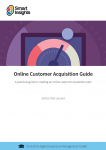Three keys to evolving with Facebook advertising changes
It’s the World Series of baseball and the monkey bars of the school playground. Facebook Ads is the battleground everyone is clamouring to dominate — probably because it’s becoming increasingly difficult to get right.
To start with, Facebook as a platform is designed to change. The more data it consumes, the quicker it adapts and adjusts according to the behaviours of its users. That means advertising best practices also change often, and marketers must stay up-to-date every time Facebook releases new features or reconfigures its algorithm.
Built into this evolution is a vocabulary that also keeps changing. Marketers need to know what Facebook means by phrases such as audience networks, lookalike audiences, and cost per thousand. There’s a steep learning curve, but getting comfortable with the lingo is important to be able to quickly strategize a successful advertising campaign.
Third, the strength and the curse of the Facebook advertising vehicle is that it’s almost infinitely customizable. This enables you to build your own funnel and audience, but if you make that funnel too long or too short or make that audience too broad or too narrow, you could easily miss out on the people who would convert.
All of this makes Facebook a pretty confusing platform and makes it difficult to engineer tangible success. But you don’t have to rip your hair out or invest millions to start conquering the beast. You just have to understand it a little better.
Is Facebook Ads worth it?
Despite its challenges, it’s clear that Facebook is a powerful force in the market. Just consider the fact that Mark Zuckerberg had to testify for two days in front of Congress because Facebook might have influenced an election.
Its unmatched targeting, machine learning optimization, massive scale, and flexibility make it a channel every startup needs to consider. And if you can keep your finger on Facebook’s flickering pulse, the spoils could be huge.
Positioning your brand in front of potential customers is what paid social does best. Paid social allows you to leverage vast audiences and zero in on niches within those audiences — paid search does not.
For example, last summer, the Antonia Saint NY Kickstarter campaign was able to raise $1,845,714 in just 40 days for its sneaker-like high heels, in large part due to Facebook. It was able to produce 1,796 sales tracked directly from Facebook, with a sevenfold return on ad spend.
The reason this campaign worked on Facebook was that it was all about finding the right people. To take advantage of this capability today, marketers must be aware of how Facebook is changing. They must work to understand how Facebook’s advertising universe can work for them and help them reach the right audience.
How to tame Facebook Ads
Here are some simple tips that can bring you closer to understanding the advertising giant and how it is changing this year:
1. Plan for a post-GDPR revolution.
Facebook has already stepped out as a leader of post-GDPR social media. In March, it made the bold move of shutting down its “Partner Categories” — it no longer uses data from third parties to enrich its ad targeting — ahead of the GDPR regulation shift on May 25, 2018.
This evolution is important to be aware of. For marketers, it means that targeting will need to be focused on their own data collection and Facebook’s primary data. Details such as household income or home value are now off limits, and you’ll have to find another angle to target particular income brackets.
The change also signifies where Facebook is headed in the near future. It shows that Facebook takes privacy and security seriously and will be looking to get ahead of the trend by proactively making its platform less data-dubious.
2. Create “meaningful social interactions.”
One of Facebook’s most recent algorithm updates were intended to create “more meaningful social interactions with family and friends.” It comes at a crucial moment in Facebook’s brand story. In order to keep users’ trust, it needed to become less focused on business and more focused on authentic friendships.
This update changes the way brands must act on the platform if they want to be seen. They can’t just rely on Facebook to plug their brand — they must instead patiently reach out to users in a way that fosters genuine engagement.
Basically, brands must become friends with their prospects.
Marketers can make the most of this new direction by optimizing their use of friend-first tools, like Instagram Stories. Facebook introduced Instagram Stories ad placement in 2017, and it now wants to increase adoption, so the algorithm is currently favouring these ads. If you can place well-designed creative and video in this space, you’ll come out on top.
3. Optimize for conversions with Facebook pixel.
Facebook’s machine learning for optimizing campaigns for conversions is constantly improving. But if you’re not set up properly on the platform, you’ll miss out on the benefits.
Marketers must make sure they have set up the Facebook pixel on their websites to be able to build campaigns that are catalyzed by audience actions that lead to conversion.
The Facebook pixel works by logging actions from users. For example, when a user sees an ad and then goes on to make a purchase on your website, the Facebook Pixel is triggered. That action is registered and then becomes part of your audience profile — you can now target users who are more likely to take this particular action.
Don’t let Facebook’s vastness and complexity get in your way. Cut out the noise and focus on identifying key pathways that you can tread to reach your audience more directly. Forge an understanding of what the platform itself is trying to achieve, and you can start to make the Facebook advertising landscape your own.

 Roy Morejon is the president and co-founder of
Roy Morejon is the president and co-founder of